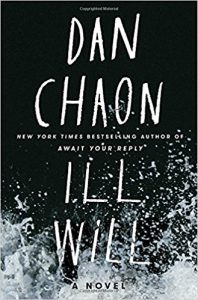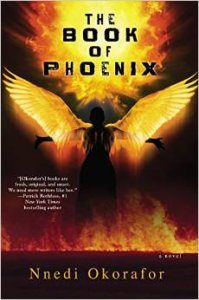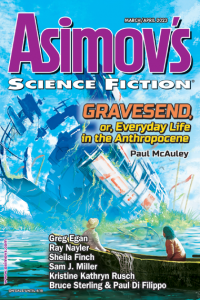John Langan reviews Ill Will by Dan Chaon
Ill Will, Dan Chaon (Ballantine 9780345476043 $28.00, 480pp, hc) March 2017.
 Dustin Tillman, the protagonist of Dan Chaon’s brilliant, thrilling Ill Will, sits at the nexus of two sets of murders. The first occurred when he was a young child: his mother, father, aunt, and uncle were shot to death the morning the two families were supposed to leave for a vacation to Yellowstone Park. Dustin accused his older, adopted brother, Russell, of the crime, and his testimony helped in convicting Russell of the murders. As the novel opens, Russell is about to be released from prison, his innocence having been established by a prisoners’ advocacy group. The second set of killings with which Dustin is associated has been brought to his attention by one of the patients for whom he is a therapist, a former police officer named Aqil Ozorowski. Aqil has noticed an apparent pattern in the deaths of young, white, male college students who leave bars unnoticed by their companions, go missing, and are discovered months later, drowned in local rivers, their blood alcohol levels suspiciously high. Though uneasy about indulging what he suspects is his patient’s invention, Dustin finds enough in Aqil’s observations to warrant entertaining his patient’s theories. Soon, he is joining Aqil on ad hoc trips to investigate the sites and circumstances of certain of the (possible) murders.
Dustin Tillman, the protagonist of Dan Chaon’s brilliant, thrilling Ill Will, sits at the nexus of two sets of murders. The first occurred when he was a young child: his mother, father, aunt, and uncle were shot to death the morning the two families were supposed to leave for a vacation to Yellowstone Park. Dustin accused his older, adopted brother, Russell, of the crime, and his testimony helped in convicting Russell of the murders. As the novel opens, Russell is about to be released from prison, his innocence having been established by a prisoners’ advocacy group. The second set of killings with which Dustin is associated has been brought to his attention by one of the patients for whom he is a therapist, a former police officer named Aqil Ozorowski. Aqil has noticed an apparent pattern in the deaths of young, white, male college students who leave bars unnoticed by their companions, go missing, and are discovered months later, drowned in local rivers, their blood alcohol levels suspiciously high. Though uneasy about indulging what he suspects is his patient’s invention, Dustin finds enough in Aqil’s observations to warrant entertaining his patient’s theories. Soon, he is joining Aqil on ad hoc trips to investigate the sites and circumstances of certain of the (possible) murders.
Both plots suggest other works: the brother wrongfully accused of murder by a younger sibling Gillian Flynn’s Dark Places; the eccentric detective aided by a more pragmatic medical professional, Conan Doyle’s Sherlock Holmes stories and novels. But Dustin is hardly Dr. Watson. Much of his behavior consists of what he does not say. When his wife is diagnosed with cancer, he does not tell their sons. When he notices that one of the boys is using drugs, he does not confront him about it. When he is uncomfortable with the way Aqil acts during their investigations, he does not press the matter. During extended scenes of his youth, we see that he was this way when Russell came to live with him and his parents, keeping secret several disturbing incidents between him and his brother. In addition, his memory of the most crucial moment of his childhood, the murders of his family members, is an uncertain thing. Although he remains convinced of Russell’s guilt, he has difficulty summoning the precise details of what he saw. This instability in his memory manifests in his current experience, as he finds himself with occasional blanks in his recollection of the day’s events. Chaon underscores this concern with the fragility of memory by having Dustin’s doctoral work have been on so-called recovered memories, the phenomenon connected to the Satanic panic of the 1980s, in which patients supposedly retrieved buried recollections of abuse at the hands of Satanic cults. (In fact, Russell’s conviction owed itself at least in part to this larger cultural trend.)
On the novel’s title page, there’s a drawing of a dead bird, which relates to a saying Dustin and his wife have shared, “Sometimes a dead bird is just a dead bird.” It’s a variation on the more famous Freudian maxim concerning cigars, but it’s a bit more freighted with meaning than the original. If there are instances when a dead bird has no more significance than its presence (or absence), then there must also be moments when the dead bird’s meaning extends beyond itself, when it enters the realm of the symbolic, attaches to something bigger than itself. The key word here is “sometimes,” and the differing possibilities balanced within the adverb are the razor’s edge on which the much of the narrative rests. Aqil has noticed what appears to be a pattern to a series of deaths. The young Dustin saw and participated in events that cast his older brother in a sinister light. What significance, if any, do these observations have in the actual world? A number of the young Dustin’s experiences with Russell involve elements drawn from horror narratives, including Satanic rituals and obscure cults. The temptation to dismiss them as youthful inventions is made difficult both by the vagaries of his memory and by his phone conversations with his cousin, Kate, who testified against Russell herself, and who insists that what the two of them related was true – or true enough.
Complicating matters further, Chaon extends his focus to include other perspectives, from those of Dustin’s cousins, Kate and Wave, to those of his sons, Aaron and Dennis, to that of Russell. Each of these characters moves through tangential narratives in which many of the tropes of horror fiction also feature, from psychic vampires, to haunted houses, to psychic abilities, to otherworldly presences. As most of these figures are either habitual drug users or under differing kinds of stress, it is easy to discount their experiences as by-products of their altered brain chemistries. Yet there are a few overlapping moments – particularly as regards the haunted house – that keep us in doubt, however slight.
Chaon marries his thematic preoccupations to stylistic experiments, from adding extra spaces to his sentences, to presenting parallel scenes in parallel columns (a technique which recalls James Dickey’s Alnilam). The effect is first to break the normal visual flow of the sentence, then to disrupt the way in which the story unfolds for the reader. What results is a novel that constantly refuses to advance in the customary way. Rather, it stutters, it skips, it tries to tell us everything at once. The same disintegrations of sense and self that threaten the book’s characters menace the narrative itself.
In Ill Will‘s closing pages, there’s an image that extends its experiment with equipoise right up to the novel’s very end. Read one way, it suggests a tragic culmination to the narrative. Read another, it suggests the horrors we have taken as symbols might have more substance than we had realized. It’s a knockout conclusion to a knockout book. Reading the novel, it’s hard not to think of the moments when novels such as The Shining and Ghost Story were published, books that would change the landscape of the horror field in fundamental ways. It’s the kind of novel that makes you want to stand up and applaud.
(And there’s a reference to Kelly Link.)
John Langan is the author of two novels, The Fisherman (2016) and House of Windows (Night Shade 2009), and two collections of stories, The Wide Carnivorous Sky and Other Monstrous Geographies (2013) and Mr. Gaunt and Other Uneasy Encounters (2008). With Paul Tremblay, he co-edited Creatures: Thirty Years of Monsters (2011). One of the founders of the Shirley Jackson Awards, he served as a juror for its first three years. He lives in New York’s Mid-Hudson Valley with his wife and younger son.
This review and more like it in the August 2017 issue of Locus.







